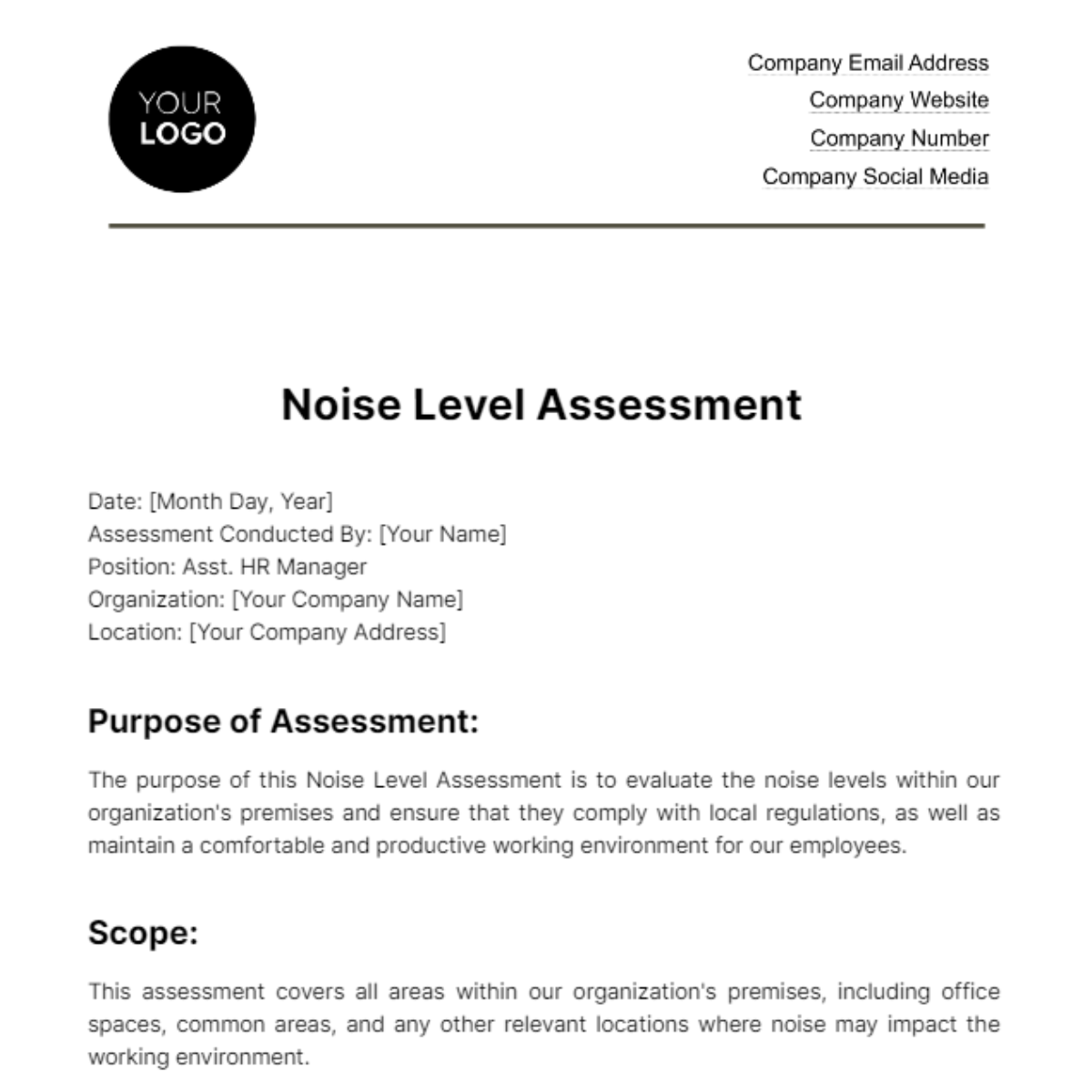Noise Level Assessment
Date: [Month Day, Year]
Assessment Conducted By: [Your Name]
Position: Asst. HR Manager
Organization: [Your Company Name]
Location: [Your Company Address]
Purpose of Assessment:
The purpose of this Noise Level Assessment is to evaluate the noise levels within our organization's premises and ensure that they comply with local regulations, as well as maintain a comfortable and productive working environment for our employees.
Scope:
This assessment covers all areas within our organization's premises, including office spaces, common areas, and any other relevant locations where noise may impact the working environment.
Assessment Methodology:
We have conducted the assessment using a sound level meter calibrated per industry standards. We have taken the measurements during normal working hours to capture typical noise levels.
Assessment Findings:
1. Noise Level Measurement:
We have recorded the following noise levels in various areas of the organization:
Common Areas: Common areas, such as break rooms and hallways, had slightly higher noise levels, ranging from 60-65 dB. While these levels are generally acceptable for social interactions, [Your Company Name] should monitor the noise levels to prevent excessive noise that may disrupt nearby workspaces.
Meeting Rooms: Noise levels in meeting rooms vary depending on the size and purpose of the room. Small meeting rooms had noise levels similar to office spaces, while larger conference rooms sometimes exceeded 65 dB during meetings. We recommended providing soundproofing solutions for larger meeting rooms to minimize noise disturbance to adjacent areas.
Production Areas: In production areas, we found the noise levels to be consistent with industry standards, averaging around 85 dB. Hearing protection measures, as safety regulations have required, should be provided to employees working in these areas.
2. Noise Sources:
The assessment identified several sources of noise within the organization, including:
Office equipment (printers, photocopiers).
Conversations and phone calls.
Foot traffic in common areas.
HVAC systems.
Machinery in production areas.
3. Compliance with Regulations:
We have found the noise levels recorded in all areas of the organization to comply with local regulations and industry standards.
Recommendations:
Based on the assessment findings, we have provided the following recommendations to maintain a comfortable and productive working environment:
Conclusion:
The Noise Level Assessment indicates that noise levels within our organization generally meet regulatory standards and are conducive to a productive work environment. Implementing the recommended measures will help further enhance the comfort and well-being of our employees.
Acknowledgments:
I would like to thank all employees and management for their cooperation during this assessment. Should you have any questions or require further information, please do not hesitate to contact the Human Resources Department.
Name and Signature:
[Your Name]
[Month Day, Year]
HR Templates @ Templates.net






























